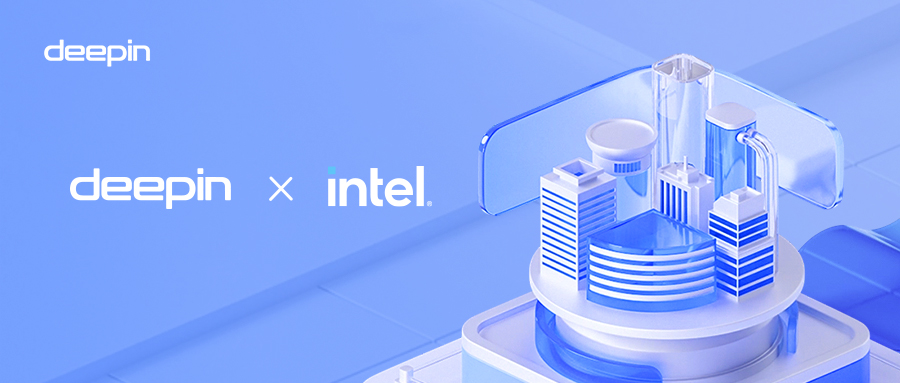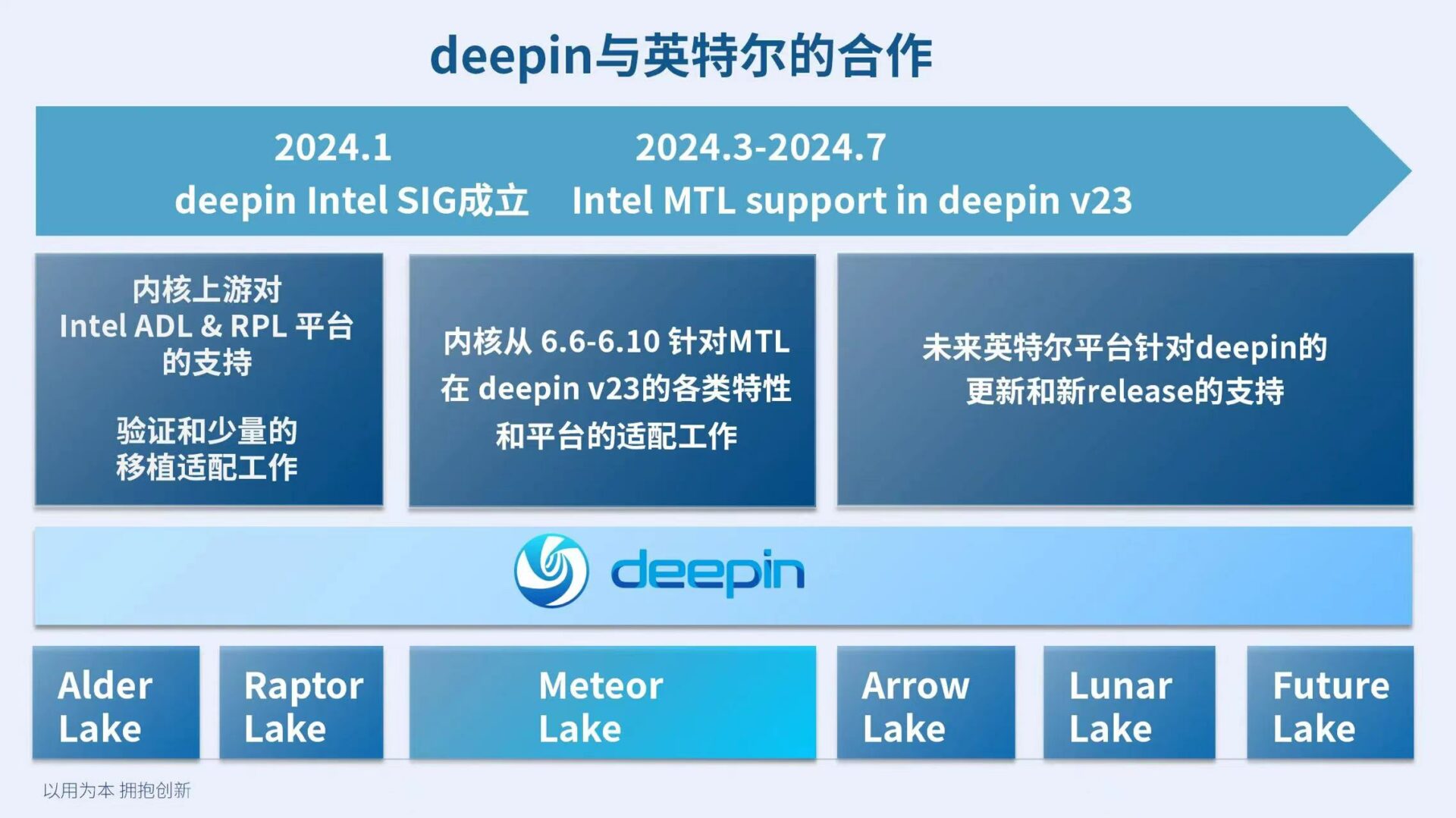
In the tide of digital transformation, the operating system, as the bridge connecting hardware and software, marks a solid step in computing technology with each leap in performance and compatibility. The upcoming deepin 23 version will support Intel's latest Ultra platform, positioning it as one of the most suitable operating systems for AI PCs on the current market, taking a historic step in integrating open-source operating systems with advanced hardware technology.
deepin 23: Leading the New Era of AI and Operating System Integration
As an open-source desktop operating system based on Linux, deepin has been beloved by global users for its beautiful, easy-to-use, and secure characteristics since its inception. From the early versions to the upcoming deepin 23 release, deepin has always been committed to enhancing user experience, strengthening system stability, and continuously exploring the integration with new AI technologies and hardware.
Intel Ultra: The Energy Efficiency Revolution of the New Generation Processor
Ultra is the new brand of processors launched by Intel, also known as Meteor Lake, which upgrades to the new Intel 4 manufacturing process, a separated modular architecture, and a new CPU/GPU architecture. It has achieved significant improvements in energy efficiency, laying a solid foundation for high-performance computing with unprecedented energy efficiency performance for Meteor Lake processors.
In-Depth Adaptation: The Powerful Union of deepin 23 and Intel Ultra
The adaptation of deepin 23 with Intel Ultra is a significant milestone for both parties in promoting the integration of AI technology with the operating system. To achieve this goal, the deepin team has worked closely with Intel's SIG group to deeply adapt and optimize for the Meteor Lake platform. From the basic firmware, power management to audio, graphics, and other modules, deepin 23 fully leverages the advantages of the Meteor Lake platform, bringing users a more fluid and efficient system experience.
This in-depth adaptation not only enhances the overall performance of the system but also brings a wealth of AI application scenarios. Through the collaborative computation of CPU, NPU, and GPU, deepin 23 is capable of handling various practical AI applications, especially local inference capabilities. The high throughput and graphics processing capabilities of the GPU, the low-power dedicated AI algorithm capabilities of the NPU, and the low-latency logical computing capabilities of the CPU together form the powerful AI computing power of deepin 23. This allows users to achieve better performance and experience when dealing with complex tasks, engaging in multimedia creation, or enjoying gaming entertainment.
Since Intel joined the deepin root community, it has not only provided technical support, adaptation, and integration services for the Intel platform to the deepin community but also actively participated in the technical support and activities of the deepin community. It has established the Intel-deepin AI discussion group, Intel-deepin customer issue research working group, and Intel-deepin technical meetings, and both parties actively carry out monthly exchange meetings to ensure that deepin users can enjoy the best experience.

Looking forward to the future, as AI technology continues to develop and become more widespread, AI PCs will become the mainstream trend in the market. The adaptation of deepin 23 with Intel Ultra will undoubtedly bring users a more efficient and intelligent PC experience. The two parties will continue to deepen cooperation in the future, jointly exploring the possibilities of new technologies and applications, providing users with an even richer AI PC experience.
Finally, I have good news to share: the official release of deepin 23 is scheduled for August 15th. Stay tuned for more exciting features and innovative AI applications!
Related Reading:
(1) deepin Full Version Images (including deepin V15)
Content source: deepin community
Reprinted with attribution